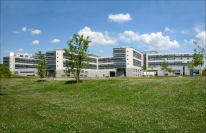 |
In my master's thesis I apply the holographic flow equation approach, proposed by Stefan Kehrein in his letter Flow Equation Holography, to the transverse field Ising model. The idea is to examine how the method applies to a interacting system by the examle of the transverse field Ising model.
The holographic flow equation approach connects, motivated by the Ryu-Takayanagi conjecture, the entanglement of a region in a generic quantum many-body system to the disentangling flow.
The entanglement is measured in the min-entropy, i.e. tells us the amount of distillable entanglement from a single copy of the considered quantum state. The disentangling flow is a continuous transformation of the Hamiltonian of the system towards a representation for which the evolved Hamiltonian do not contain any entanglement creating terms. This continuous transformation is controlled by a parameter, ranging between 0 and infinity, let's call it B. This is realised by the method of flow equations by choosing the generator as the commutator of the Hamiltonian and the specific parts of this Hamiltonian, describing interactions between the region of interest and the rest of the system. Since states with bigger energetic differences are decoupled first during the flow, the direction in the parameter, controllin the disentangling flow, can be understood as an additional emergent RG-like dimension. This bridges to the conjecture of Ryu and Takayangi, who proposed a connection between the entanglement of a region in a conformal field theory with the remaining system and the minimal surface of the boundary of this region in a dual Anti-de-Sitter space time, which posses an additional emergent RG-like dimension.
My work so far was to understand the different concepts involved in this method and to diagonalize the transverse field Ising model, as well as to apply the flow equation method to this model and the model of free fermions.
I calculated the evolution of the Hamiltonians of both a free fermion system and the transverse Ising model under the disentangling Flow Equations. By this evolution the matrices, representing the the distinct kinds of couplings, change during the flow. To get an understanding of the effects of the disentangling flow, the flow is shown for some exemplary systems below:
Free fermionic system under disentangling flow

The coupling matrix for a flow parameter B equal to 0, 0.1, 1, 10, 100 and 1000. The part of the matrix, coupling sites of the region of interest with the rest of the system, vanishes under the flow and new couplings are induced.






Free fermionic system under disentangling flow with remaining coupling between the subsystem

The coupling matrix for a flow parameter B equal to 0, 0.1, 1, 10, 100 and 1000. Here, since we devide the system exactly in two halfs, we have to face degeneracies. Their consequence is that couplings are induced and remain in the system, which link both subsystems. BUT these couplings do not contribute to any entanglement between both subsystem, i.e. these couplings commute with the initial Hamiltonian.






Transverse field Ising model under disentangling flow


The coupling matrix for both the particle number conserving coupling and the coupling, which conserves not the number of particles for a flow parameter B equal to 0, 0.1, 1, 10, 100 and 1000.














